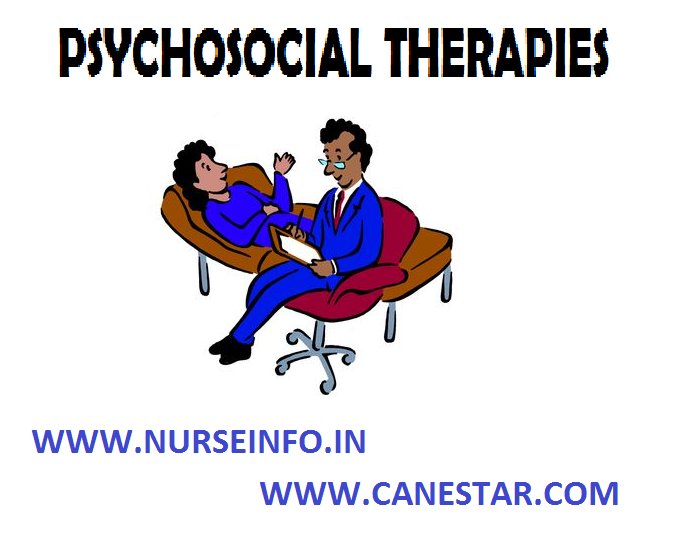PSYCHOSOCIAL THERAPIES – Behavior Therapy, Modeling and Observational Learning, Characteristics of Dysfunctional Families, Family Centered Approach and Technology for Family Therapy (MENTAL HEALTH NURSING)
BEHAVIOR THERAPY
Behavior is the internal and external response (feelings, thoughts, words, actions, and physiological responses) a person makes to environmental stimuli. Behaviors are measurable and able to be altered through behavior therapy. Behavior and cognitive therapy is based on the concept that mental disorder represents learned behavior. Learning principles are applied to modify these behaviors. Behavioral techniques include the use of token economies, time out, and rewards or reinforcement for desired behaviors
Types of Behavior Therapy
Classical conditioning: if an unconditioned stimulus (food) elicits an unconditioned response (salivation in a hungry dog), then a conditioned stimulus (a bell) paired with food, over time will condition the dog to salivate, a conditioned response, upon hearing a bell. This conditioning can be used to explain and treat learned anxiety, helplessness. Phobias, obsessive-compulsive disorder, somatoform disorders and sexual disorders
Operant conditioning: operant behavior (eating or dieting/exercise) is activity that is strengthened or weakened by its consequences (weight gain or loss). Operant behavior is influenced by reinforcement (something that increases the probability of the response). The reinforcement meets a need and is goal directed. Positive reinforcement (reward) strengthens a behavior; as well as removal of a negative reinforcement. Punishment suppresses, but does not eliminate a behavior. These behavioral principles can be applied in many clinical situations
MODELING AND OBERVATIONAL LEARNING
A person can imitate or learn through another’s performance. Observing the behavior of another can influence a person to behave similarly, especially when the model is rewarded for his/her behavior
Cognitive therapy: cognition is the act or process of knowing. This form of therapy corrects distorted thinking and its underlying faulty assumptions, beliefs and attitudes. Cognitive therapy proposes that it is not the events themselves that cause anxiety and maladaptive responses but rather people’s expectations, appraisals and interpretation of these events. Cognitive therapists believe that maladaptive responses arise from cognitive distortions. Such distortions might include errors of logic, mistakes in reasoning, or individualized views of the world that do reflect reality
Family therapy: family therapy is broadly defined as “the attempt to modify the relationships in a family to achieve harmony”. A basic assumption of family therapy is that there are certain human behaviors patterns that can help people grow and live creatively, while there are others that lead to dysfunction and non-communicative action and result in emotional illness in the family
In family therapy, the family is viewed as a system in which involves are interdependent, a change in one part (member) of the system affects or creates change in all the other parts (members). The focus is not on an individual identified client but rather on the family as a whole. The basic concept of this form of treatment is that it is more logical, faster, more satisfactory and more economical to treat all members of a system of relationship than to concentrate on the person who is supposed to be in need of treatment
CHARACTERISTICS OF DYSFUNCTIONAL FAMILIES
Families who experience emotional difficulties usually have communication problems. They may discount or ignore each other’s communication. They may “scapegoat” one of their members by viewing and treating that member as though he or she is the cause of all the family’s problems. They may create “triangles” in which two family members form an alliance and exclude the third person. Passive-aggressive behavior is common
FAMILY CENTERED APPROACH
Family therapy is therapy for the entire family. It is based on the beliefs that the behaviors of one person in the family affects everyone else in the family, and that the presence of symptoms such as depression or anger in one family member is a sign of disorder, pain or problems in the whole family systems. The behavior of an individual cannot be understood without understanding the behavior of other family members. Interventions are directed at the family as a whole and their behaviors, not at an identified client. Family therapy promotes family cohesion
TECHNOLOGY FOR FAMILY THERAPY
Genogram: a three generational map of family structure and relationships which may be used to diagnose and understand family’s history, problems, roles and values
Communication techniques include
- Discussing painful events or family problems openly
- Clarifying members thoughts, feelings and messages
- Dealing with anger openly and non-judgmentally
- Connecting feelings and facts, never blaming
- Expressing empathy with family members
- Experimental and homework activities, such as planning a family vacation, doing a fun activity together or eating meals together


